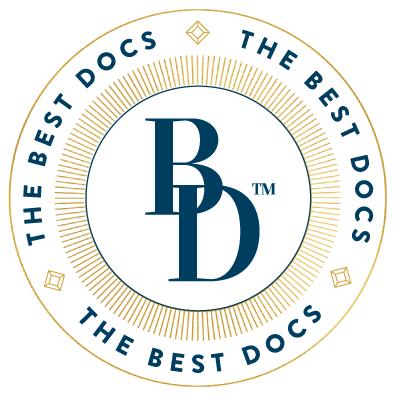Top Doc: Regular Athletes Can Receive The Same Level Of Care As Pros
When a major sports star gets hurt, you’re going to hear about it … a lot. After all, it’s big news when one of the world’s top athletes can’t compete. But when it comes to their care and recovery, the top sports stars have an advantage over the average Joes, right?
To find the answer to this intriguing question, we spoke with someone who knows both sides—Dr. Jonathan Glashow, a top orthopedic surgeon who treats many top athletes (including NBA all-star Kawhi Leonard), is Chief Medical Officer for the New Jersey Devils and Philadelphia 76ers, and also has a thriving private practice in New York City.
“In my opinion, weekend warriors should expect the same level of care as the all-stars they admire,” he asserts. This is especially true when it comes to common sports injuries—like problems with the knee’s Anterior Cruciate Ligament (ACL).
Dr. Glashow explains that because problems with the ACL aren’t limited to a certain type of athlete, the focus for every patient with this issue should be finding the best level of care. “Injuries can occur in any athlete, from someone who has only played recreational sports to someone who is considered amongst the best in the world,” he says. “Still, each of these individuals deserves to be treated like their knee matters most—because to it does.”
For ACL injuries, many patients will hear or feel a “pop” when their ligament tears. This is followed by swelling, pain, and frequent buckling or instability in the knee. No matter the athlete, the examining orthopedic surgeon should perform manual tests on the knee to determine the degree of instability. Dr. Glashow listed some of the more common tests:
· The Lachman Test, Anterior Drawer Test, and Pivot Shift Test are exams the doctor may use to see how much the tibia moves in relation to the femur.
· The KT2000, an arthrometer, a machine that measures joint looseness in the knee, can be used to measure instability.
· X-rays can reveal bone damage and/or arthritis.
· A High Field Strength Magnetic Resonance Image (MRI) is essential to assess damage to the soft tissues including ligaments, tendons, and cartilage.
Dr. Glashow explains that because problems with the ACL aren’t limited to a certain type of athlete, the focus for every patient with this issue should be finding the best level of care. “Injuries can occur in any athlete, from someone who has only played recreational sports to someone who is considered amongst the best in the world,” he says. “Still, each of these individuals deserves to be treated like their knee matters most—because to it does.”
If further testing is required to clearly evaluate the problem, an arthroscopy may be recommended. During arthroscopy, a tiny fiberoptic scope is inserted into the joint so the doctor can do an internal visual assessment of the knee.
Once the doctor has a complete understanding as to the extent of damage, a detailed treatment plan is developed based on the patient’s age, activity level and desired degree of return to sport.
Dr. Glashow explains that “the non-operative approach typically works well for patients who are physiologically older or less active. Those patients who are willing to decrease their activity level and avoid pivoting sports can expect a fair to good outcome just by learning to cope with their injury.”
For those who are younger and more active—and want to continue playing pivoting sports like soccer, tennis, basketball, football or skiing—surgery is usually the best option. “One of the most exciting new repair techniques I’ve embraced is putting a brace inside the knee, which allows for a faster return to mobility,” he asserts. “This takes the stress off of the healing ligament. Over time, the internal brace loosens up on its own and leaves the patient with a more natural feeling, less pain and more stability.”
Dr. Glashow says Platelet Rich Plasma (PRP) is another effective advancement in healing. Essentially, the doctor uses growth factors from the patient’s blood to augment the healing process. A small blood sample is drawn from the patient during surgery and is spun at a high speed to separate the plasma from the blood cells; the plasma/growth factors are injected into the surgical site.
Still, no matter which route the patient chooses to repair their ACL, Dr. Glashow says the rehabilitation process is critical. “Commitment to the rehabilitation program following an ACL procedure is a priority for return to sport. The patient must carefully follow the recovery program outlined by the doctor.”
A successful result requires meticulous surgery and a subsequent rehabilitation program reflective of what was done. Failure to combine the two synchronously often results in a suboptimal outcome. And, of course, the choice of doctor should be a priority. A good rule of thumb is to work with a board-certified surgeon who has an extensive—and successful—history repairing the ACL and returning athletes to their sport.



